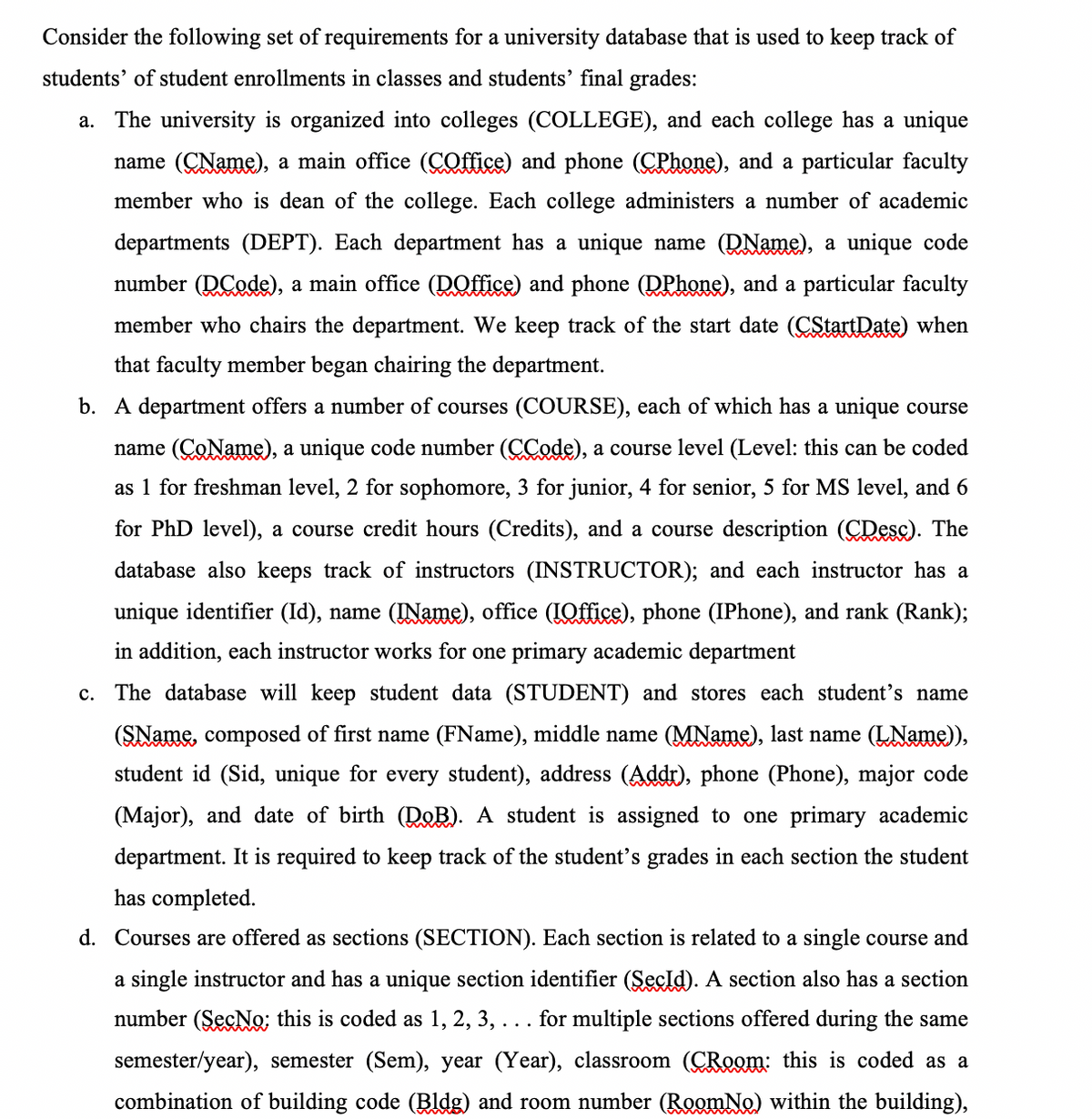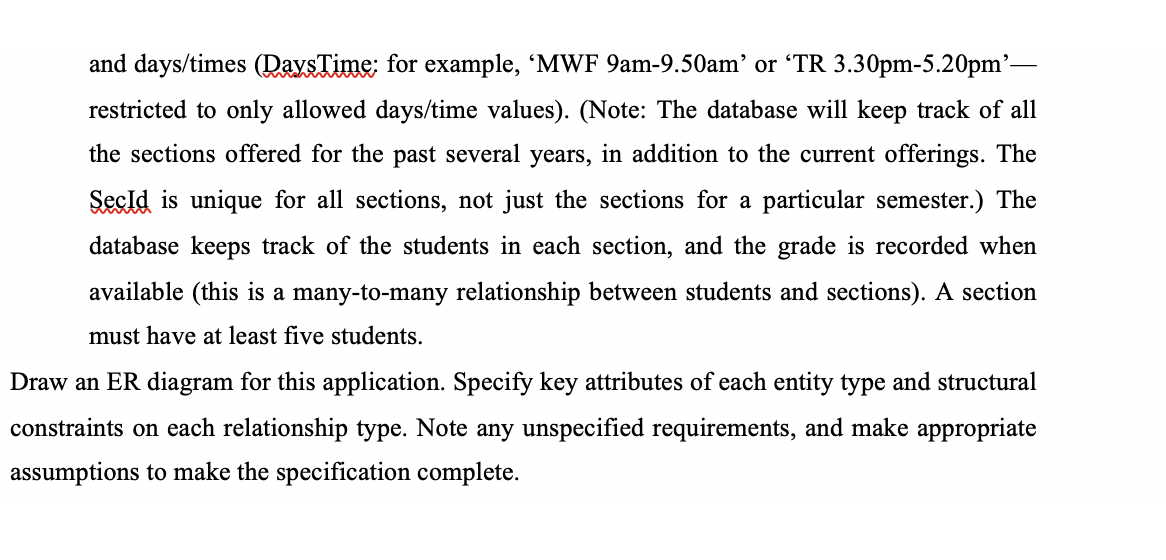and days/times (QaysTime; for example, 'MWF 9am-9.50am' or TR 3.30pm-5.20pm'- restricted to only allowed days/time values). (Note: The database will keep track of all the sections offered for the past several years, in addition to the current offerings. The Secld is unique for all sections, not just the sections for a particular semester.) The database keeps track of the students in each section, and the grade is recorded when available (this is a many-to-many relationship between students and sections). A section must have at least five students. Draw an ER diagram for this application. Specify key attributes of each entity type and structural constraints on each relationship type. Note any unspecified requirements, and make appropriate assumptions to make the specification complete.
SQL
SQL stands for Structured Query Language, is a form of communication that uses queries structured in a specific format to store, manage & retrieve data from a relational database.
Queries
A query is a type of computer programming language that is used to retrieve data from a database. Databases are useful in a variety of ways. They enable the retrieval of records or parts of records, as well as the performance of various calculations prior to displaying the results. A search query is one type of query that many people perform several times per day. A search query is executed every time you use a search engine to find something. When you press the Enter key, the keywords are sent to the search engine, where they are processed by an algorithm that retrieves related results from the search index. Your query's results are displayed on a search engine results page, or SER.


Trending now
This is a popular solution!
Step by step
Solved in 3 steps with 1 images




